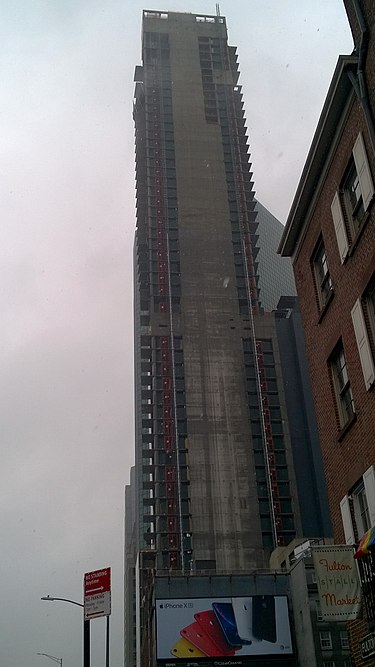Why Nobody Can Fix This New York Skyscraper - YouTube
161 Maiden Lane (also known as One Seaport, 1 Seaport, or Seaport Residences) is an incomplete 670 ft (205 m) tall residential skyscraper on Maiden Lane in the Financial District of Manhattan, New York City,
The building leans 3 inches (76 mm) to the north as a result of the method used to construct its foundation: instead of using the piling method like other neighboring skyscrapers, soil improvement methods were used where chemicals or other material are added to the soil to strengthen it. As of 2024, only half of the finishes, including windows, have been installed.[2]
The Nightmare of San Francisco’s Sinking Tower, Explained - YouTube
Millennium Tower (San Francisco) - Wikipedia
After developers disclosed to authorities in 2015 that the building was sinking and tilting,[26]
the foundation of the main tower consists of a concrete slab built on 60-to-90-foot deep (18 to 27 m) concrete friction piles through the fill and young bay mud
The building is leaning toward the northwest,[30][31][32] and this has caused cracks in the building's basement and the pavement surrounding the tower.[33] As of 2018, the sinking had increased to 18 inches (46 cm) with a lean of 14 inches (36 cm).[34] Measurements in 2022 show the tilt increased to 28 inches (71 cm), as measured from the roof.[35]
A building is only as sound as its foundation.

